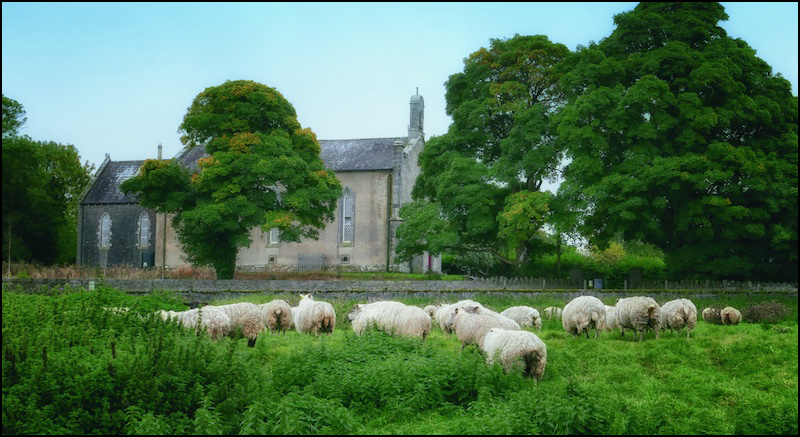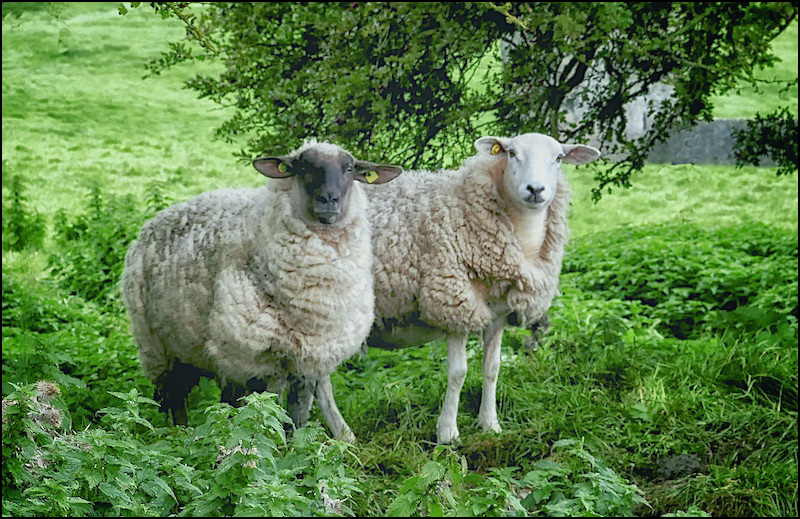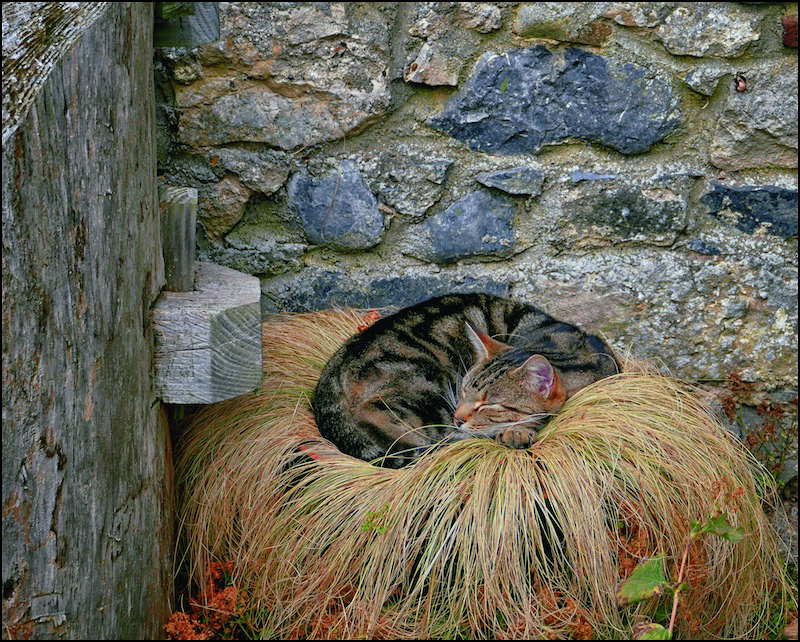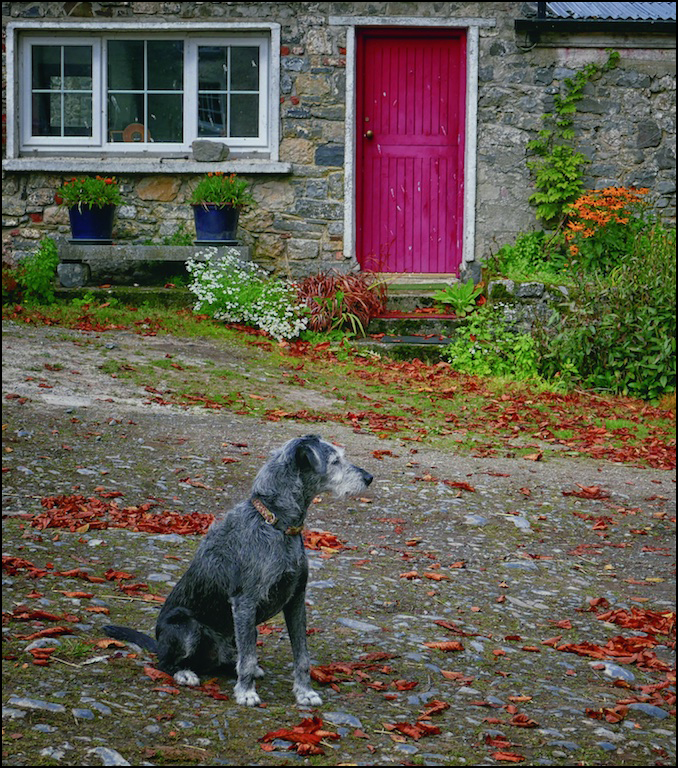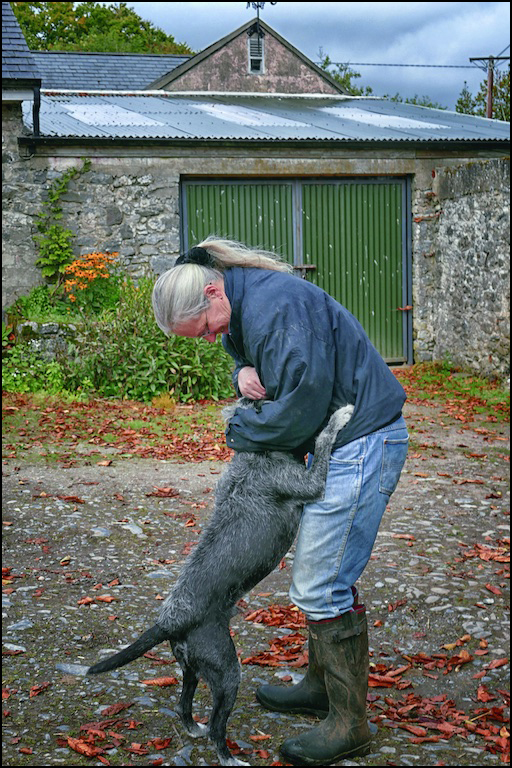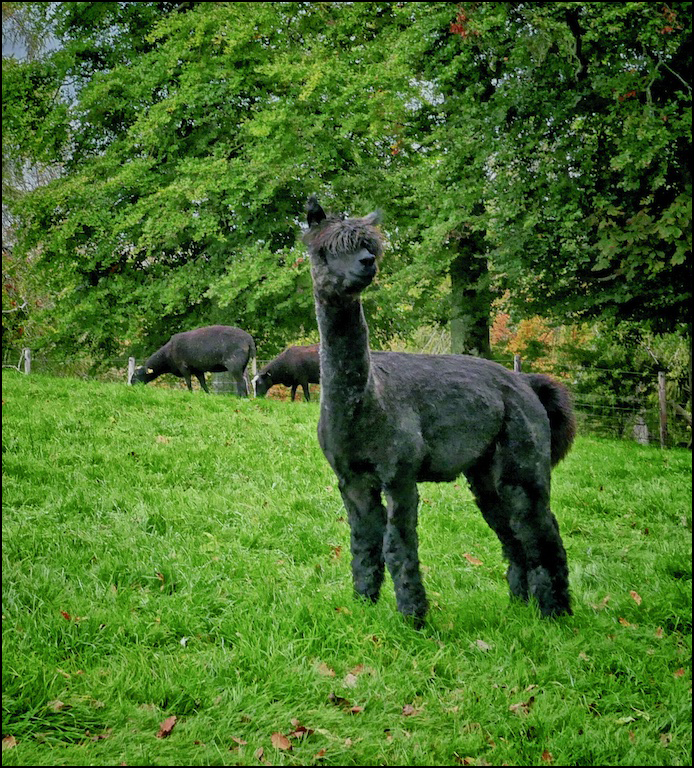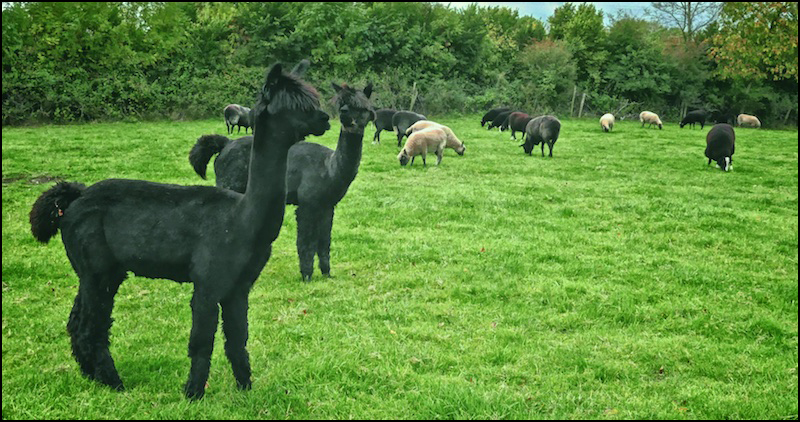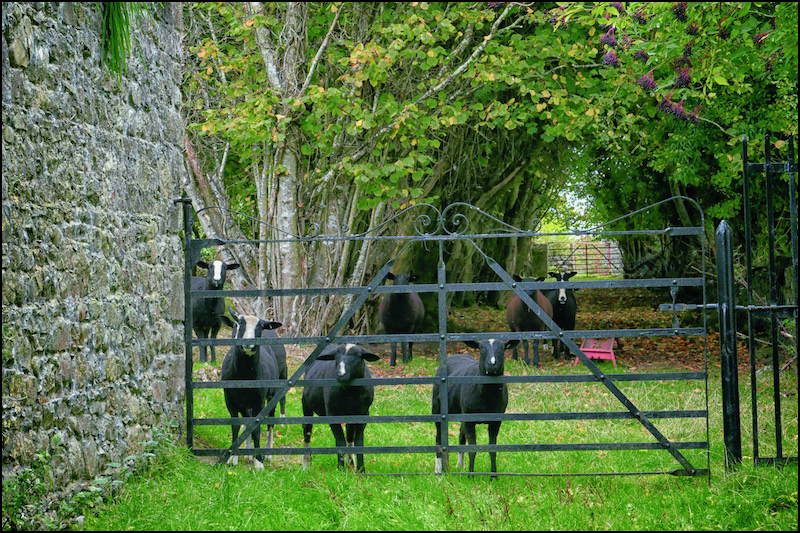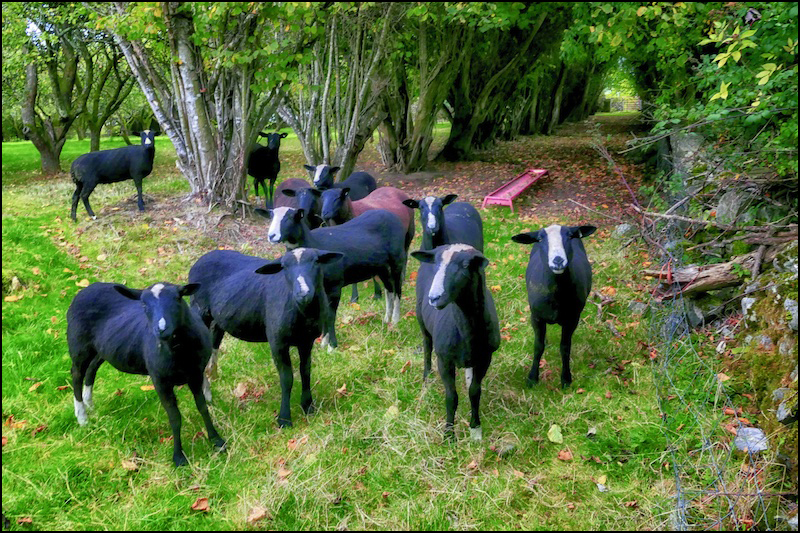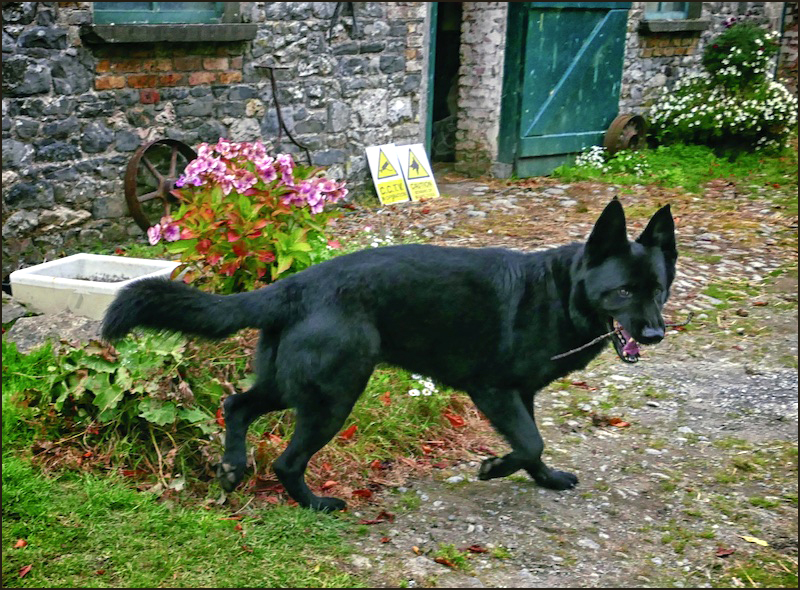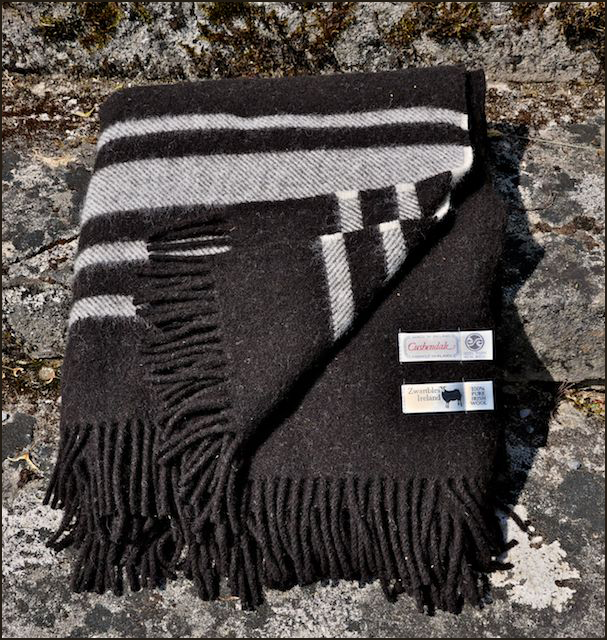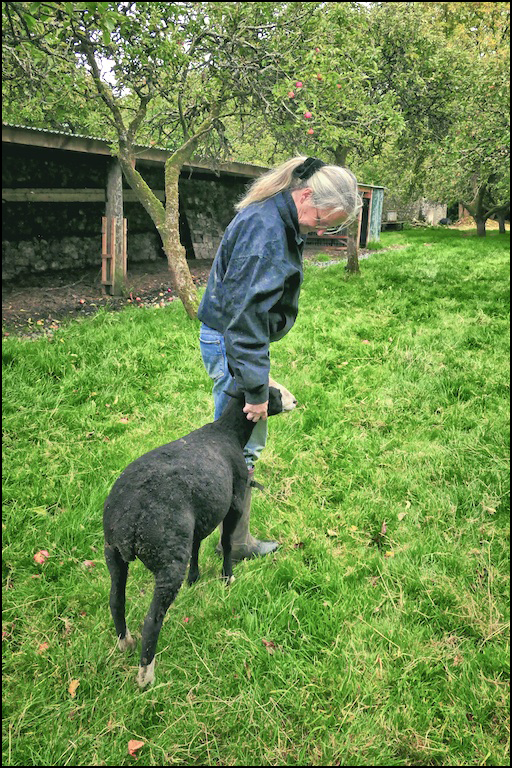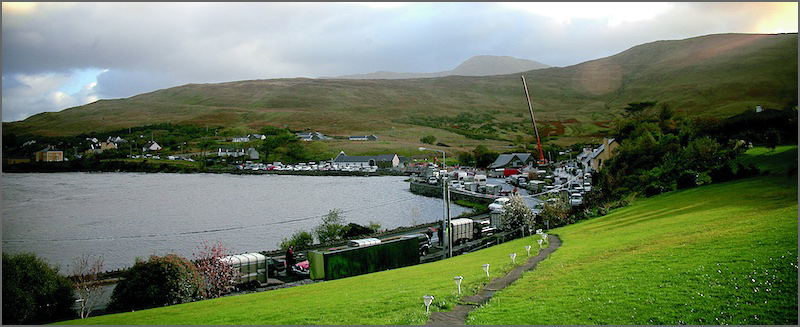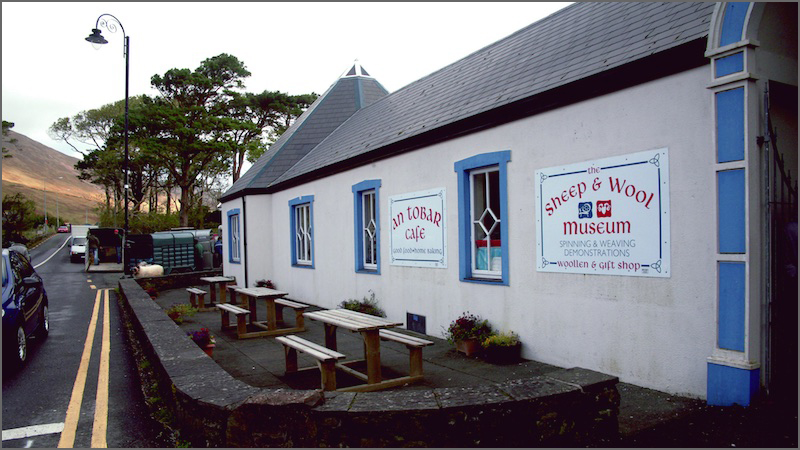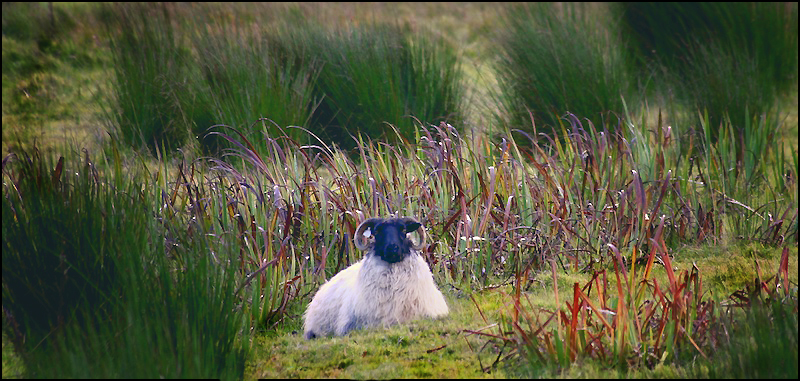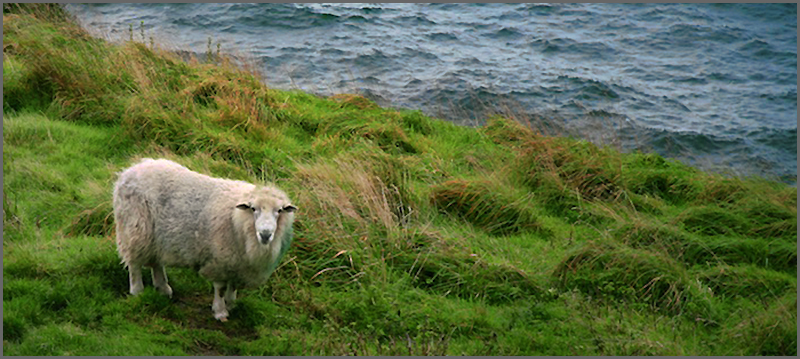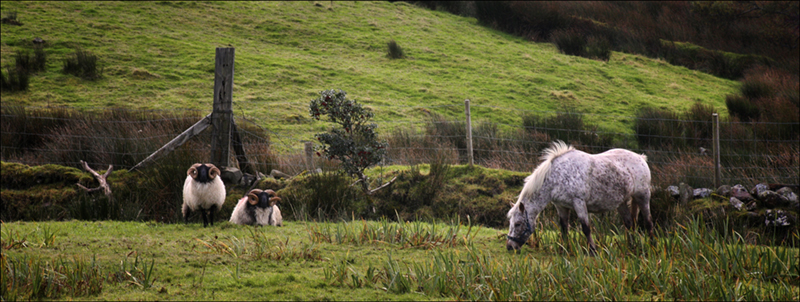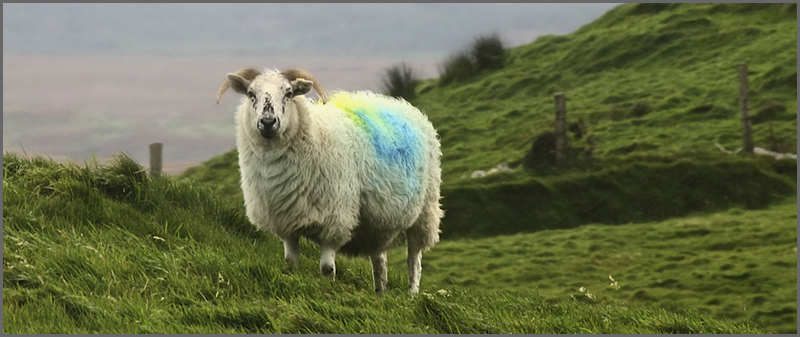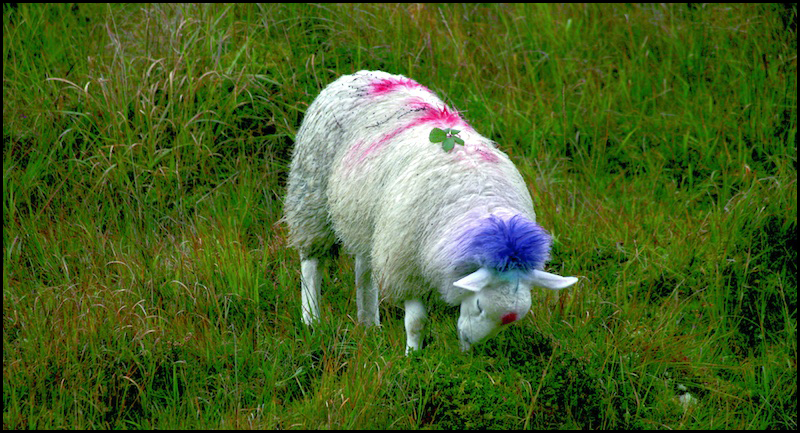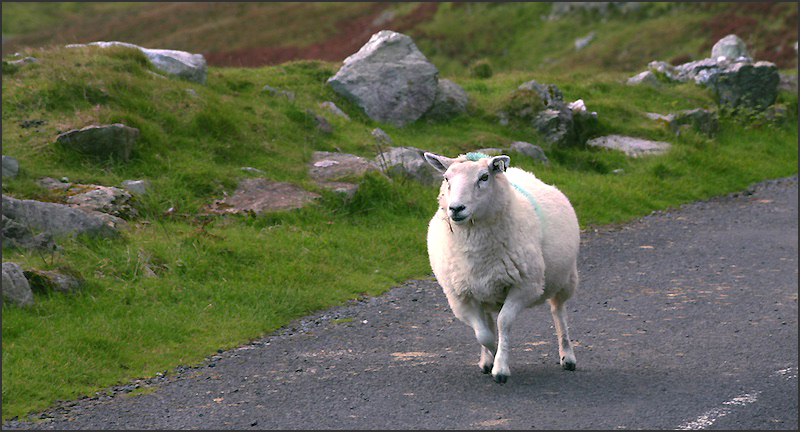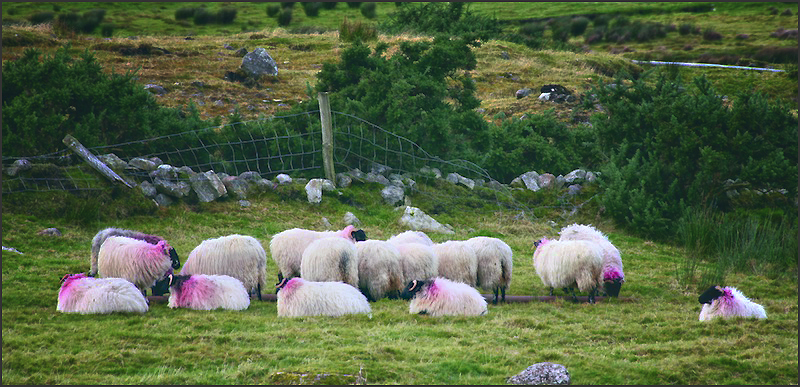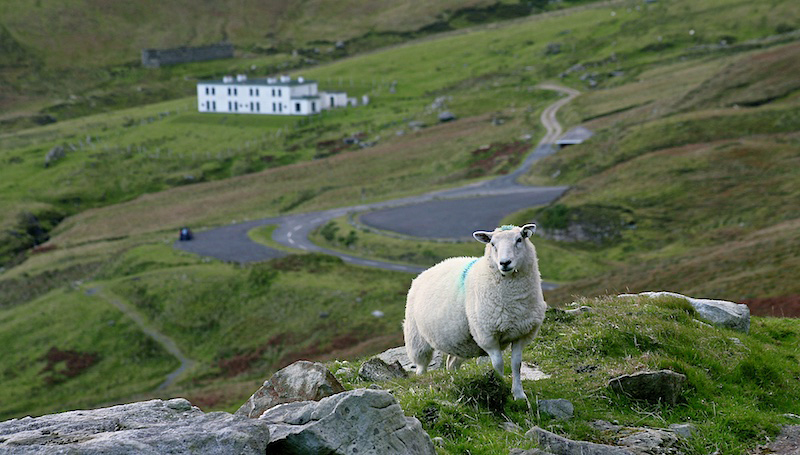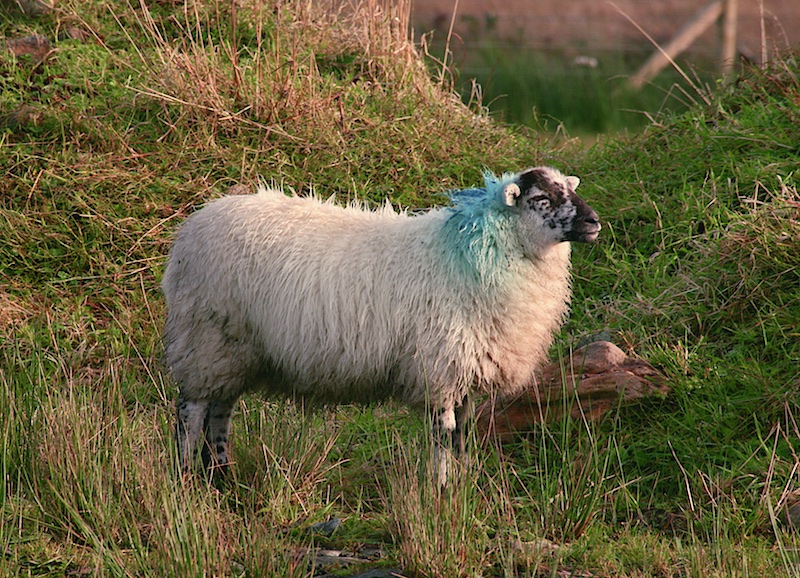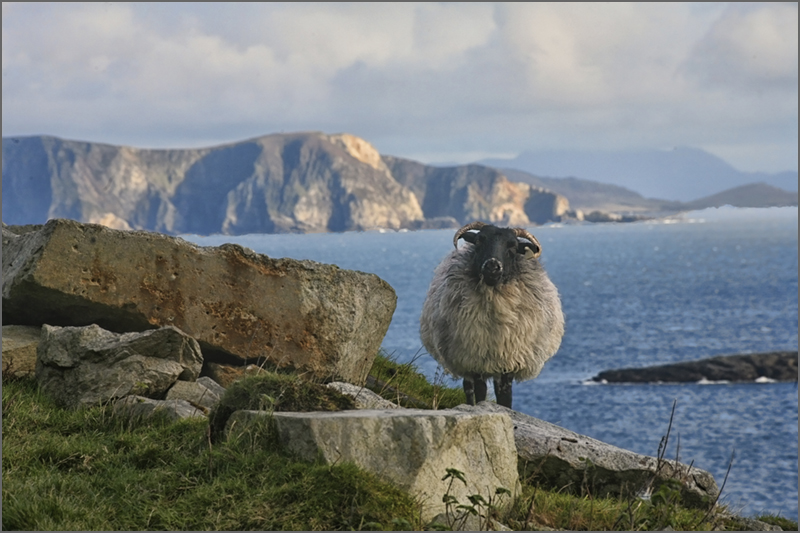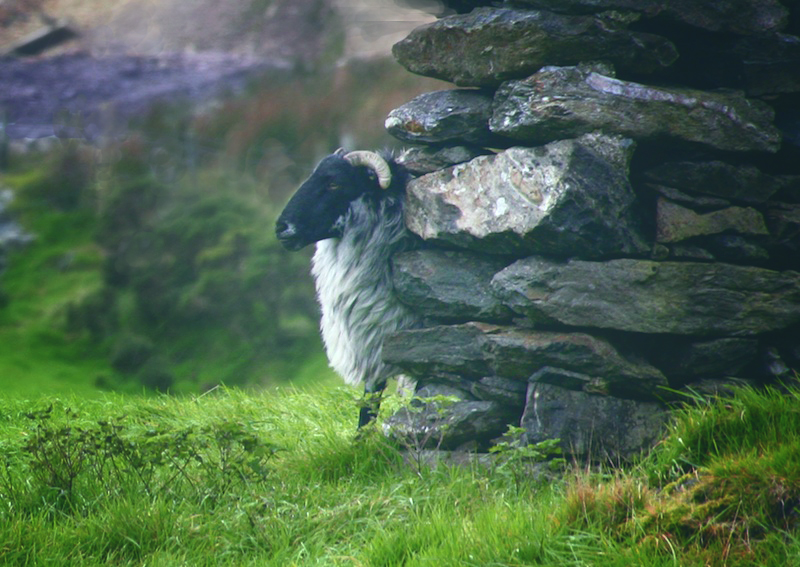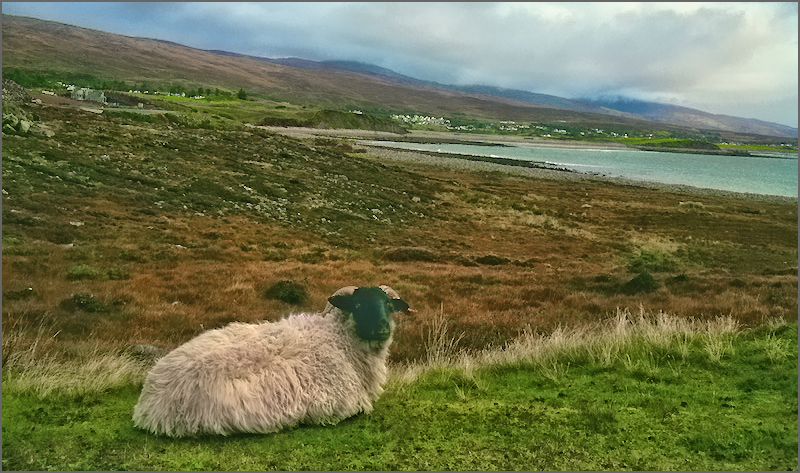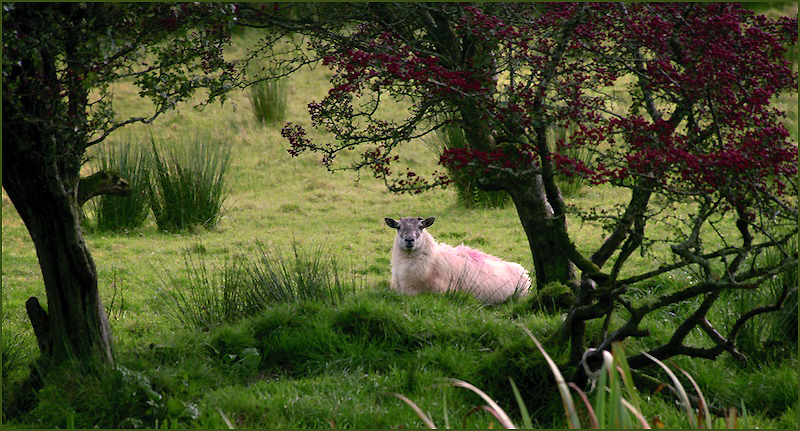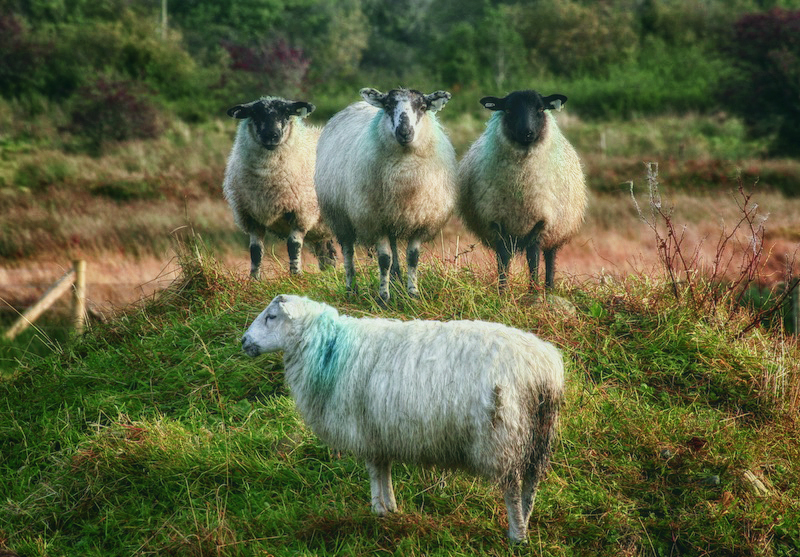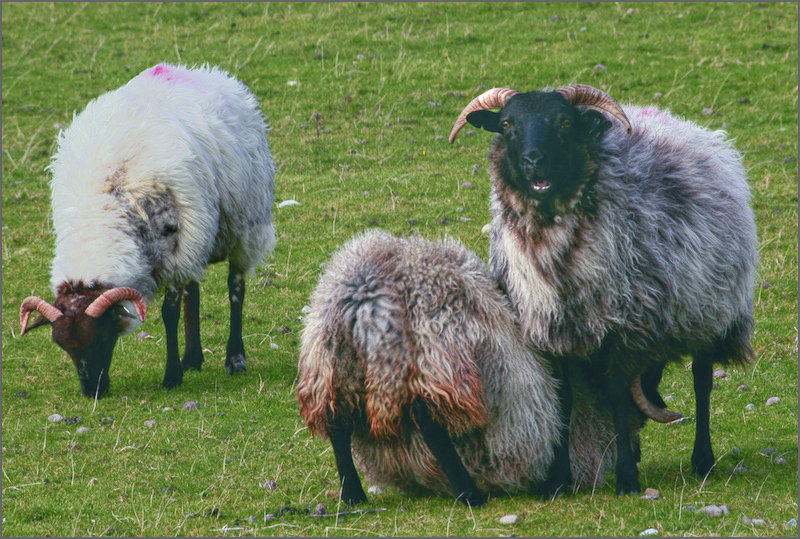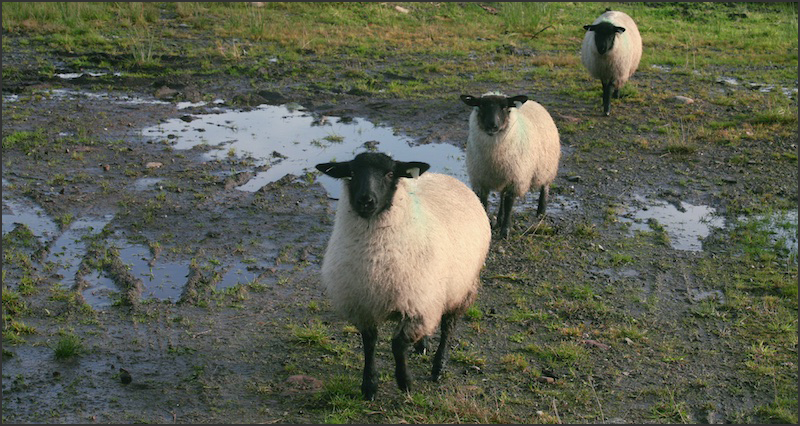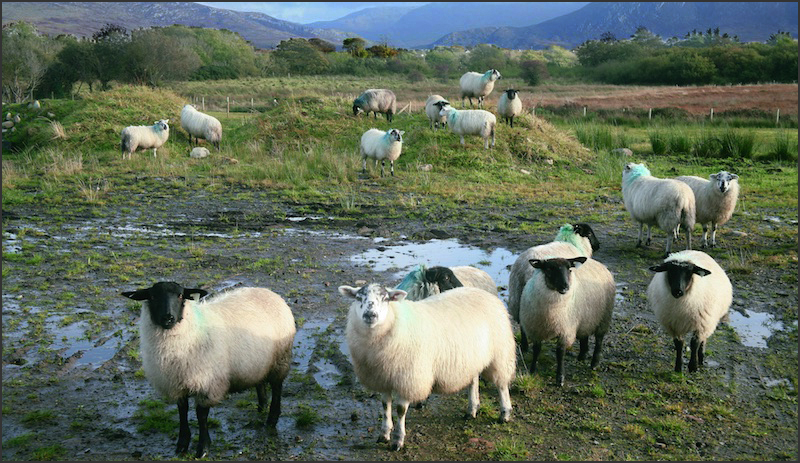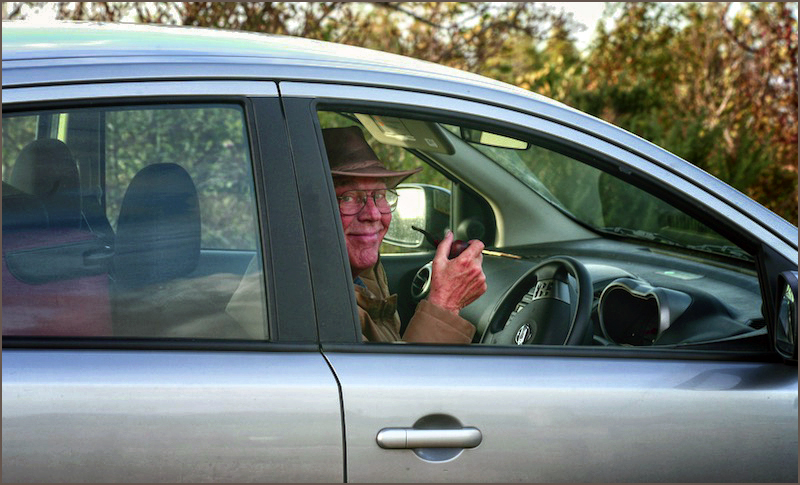Some Sheep and a Little History
During our wonderful visit to Suzanna Crampton’s farm to photograph her Zwartbles flock (see previous post), I asked Suzanna if there were any scenic venues nearby where I might find other sheep to photograph. She suggested that we stop by Kells Priory, which was a short distance from her farm. Maria Dunphy kindly led us to the location, and oh, yes, there were plenty of sheep!
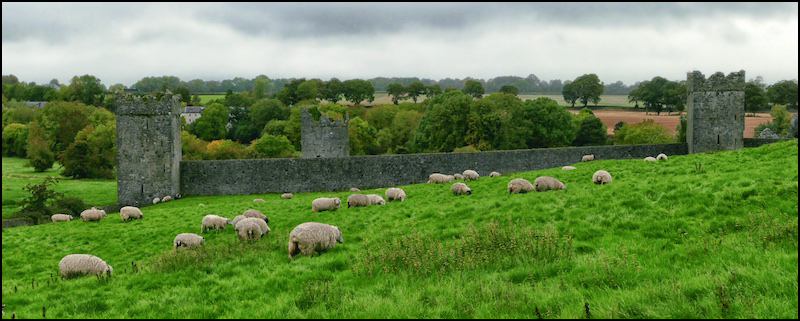
The Augustine priory, the walls of which date back to the 1300s, is situated alongside King’s River next to the village of Kells, about 15 km south of the medieval city of Kilkenny. The priory is a National Monument under the guardianship of the Office of Public Works. One of its most striking features is a collection of medieval tower houses spaced at intervals along and within walls that enclose a site of just over three acres. These towers give the priory the appearance more of a fortress than of a place of worship. A large flock of sheep wander these acres, and since it was easy for me to climb over a low-walled section, I wandered around with them. They didn’t seem to mind.
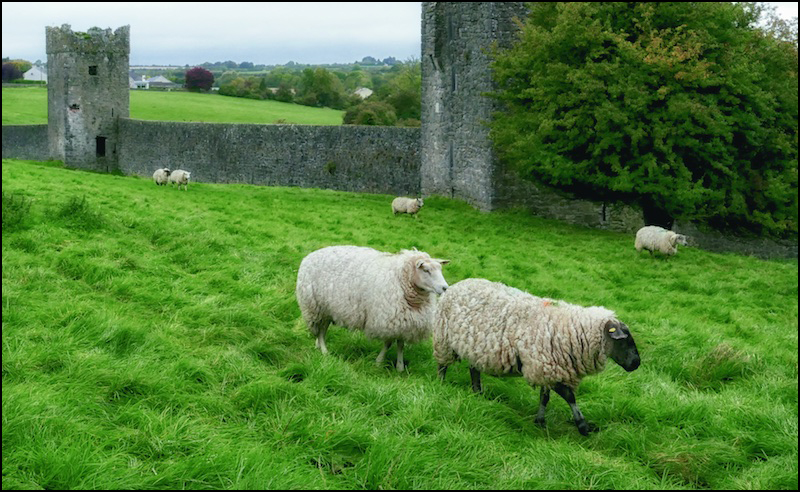

The priory is divided into two parts, an inner monastic “Precinct” alongside the river, and a large outer enclosure to the south known as “Burgher’s Court.” Today all the monastic remains are grouped together in the Precinct while Burgess Court is little more than the walled field populated by sheep and tourists like me.
In reading about its history, I discovered that Kells Priory was associated with a 1324 witchcraft trial that resulted in a noblewoman, Petronilla de Meath, becoming Ireland’s first heretic to be burned at the stake. In March 1540 the church and property were surrendered to James Butler, 9th Earl of Ormonde, a result of English King Henry VIII’s Dissolution of the Monasteries, one of the most revolutionary events in English history.
. . . . . . . . . . . . . . . . . . . . . . . . . . . . . . . . . . . . . . . . . . . . . . . . . . . . . . . . . . . . . . . . . . . . . . . . . . . . . . . . . . . . . . . . . . . .
Knowing that I was compiling photographs for a book on sheep in Ireland, Maria Dunphy, my photographer friend who lives and works in Kilkenny, put me in touch with Suzanna Crampton, who raises Zwartbles sheep in nearby Bennettsbridge. Her extraordinary flock is located on Suzanna’s picturesque farm where the sheep graze in bucolic pastures near the lovely Nore River. Suzanna also is an accomplished photographer who occasionally offers photography workshops at her exceptionally photogenic farm.
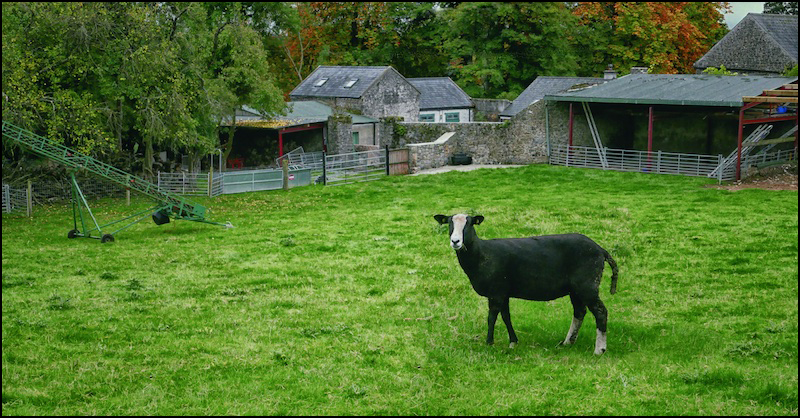
To say that Suzanna Crampton is a Zwartbles breed expert would be an understatement, and given her vibrant personality, it is hard to imagine a more effective advocate for the breed. She very generously introduced Jim and me to her gorgeous flock and other interesting animals that share her farm. Suzanna confirmed that what I had read about the breed is true: They are docile, friendly, easy lambing, prolific, milky, and the ewes make excellent mothers.
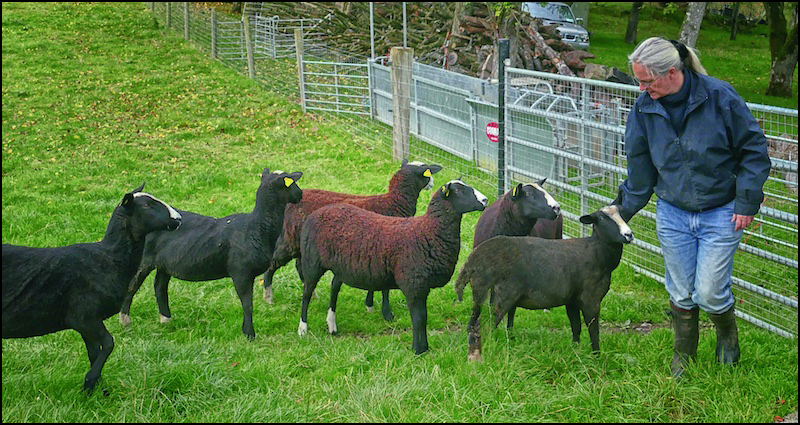
The Zwartbles breed is not native to Ireland; they originated in the Friesland region of the north Netherlands. By the mid 1970’s their numbers had decreased to the point that they were entered into the Dutch Rare Breed Survival Trust, which helped to stabilize the breed. Zwartbles sheep were introduced into Britain from Holland in the 1980’s and to Northern Ireland in 2000. By 2005, they could be found in the south, with the first lambs born in the spring of 2006. In 1995, a Zwartbles Sheep Association was formed in Great Britain, and Irish breeders were granted membership numbers in 2007. The South of Ireland Zwartbles Sheep Club was formed in 2010.
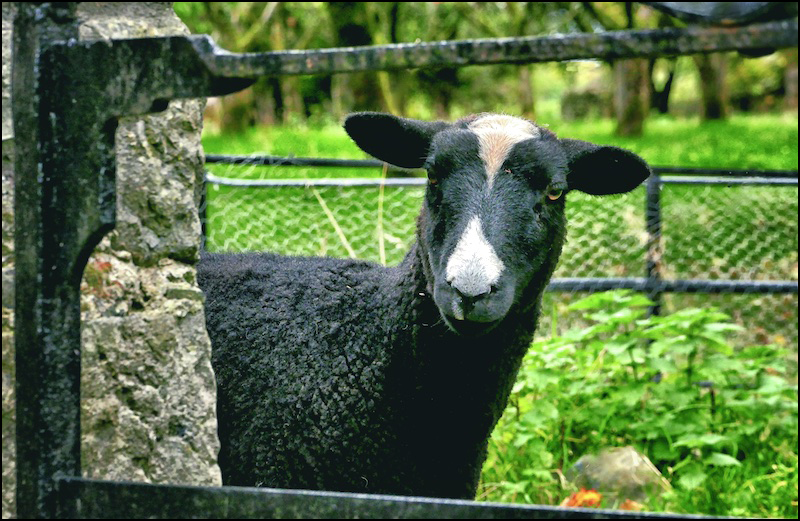
Zwartbles sheep are striking in their appearance, featuring black/brown fleece, a white blaze on the face, between two and four white socks, a white tail tip, and both ewes and rams are hornless. Zwartbles are relatively large sheep: Ewes weigh an average of 85 kg (187 lbs), and rams 100 kg (220 lbs). The dense fleece, when shorn, ranges from black to brown with sun bleached tips, and some silvering may be present in older animals. The wool is medium to fine, making it popular for spinning and felting.
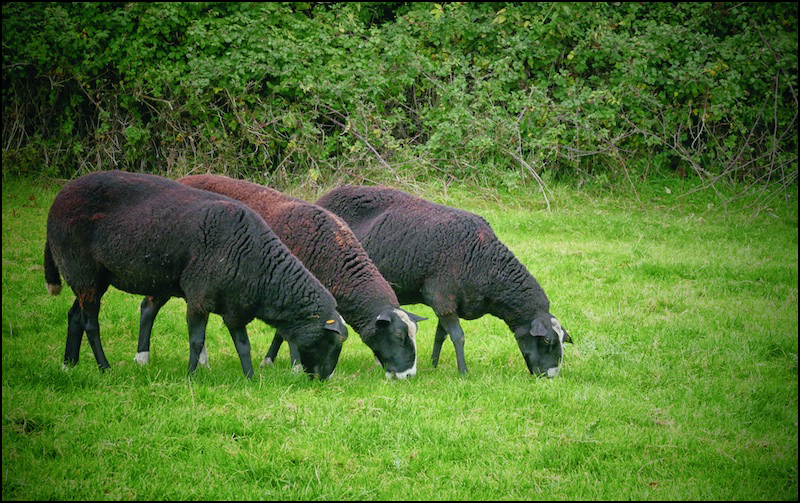
Because the breed originated from a cold, wet, windy area of the Netherlands, Zwartbles are quite at home in Ireland. They are mainly used to produce breeding stock, meat, milk and wool and are increasingly popular with both small holders and commercial farmers. Before our visit most of what I had learned about Zwartbles came from reading Suzanna’s delightful Bodacious the Cat Shepherd website and Facebook Page. I thoroughly enjoyed poring over the two sites in order to admire Suzanna’s great photos featuring the farm’s diverse brood. While Bodacious is the best known of the farm’s cast of characters, he was not around on the day of our visit, but we were introduced to Ovenmitt, whose mid-afternoon snooze we did not interrupt, and darling Pepper, a border collie/fox terrier mix, who is always on duty and at the center of the action.
The most surprising animals we met at the farm were a pair of male alpaca, whose job it is to protect the sheep from attacks by dogs (even pet dogs) that stray into the sheep pastures. It was fascinating to see the alpaca stand guard over the sheep as they moved from one pasture to another, then remain alert as the flock settled down to graze.
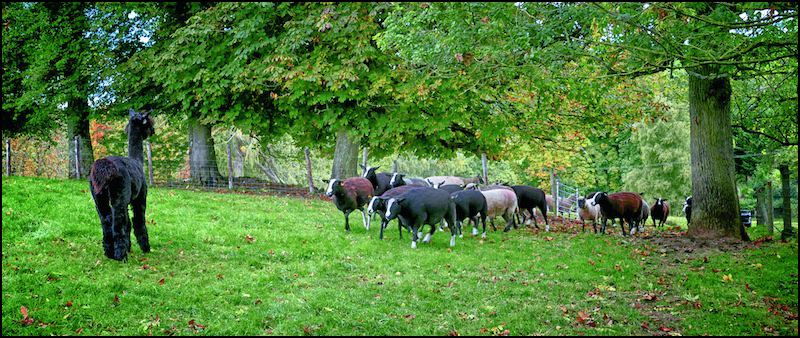
Speaking of standing guard, my favorite picture of the day was of Pepper who, upon Suzanna’s command, deftly leapt on to the branch of a tree and happily surveyed his domain.
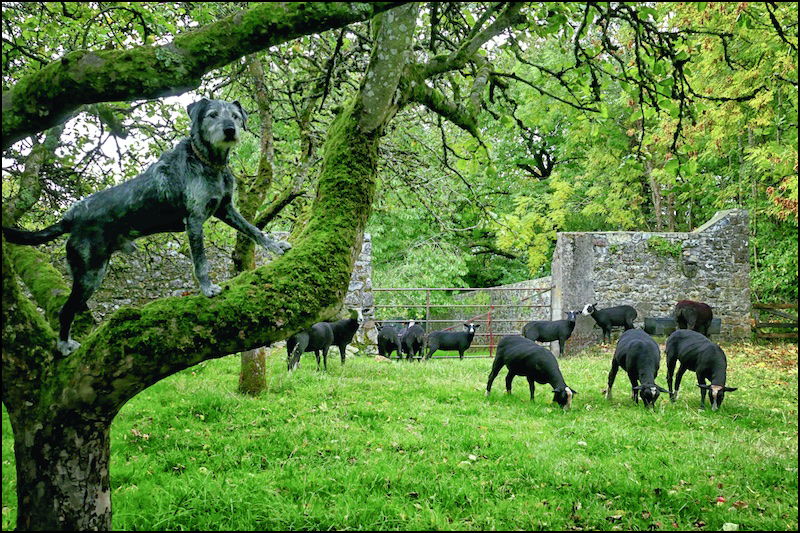
Before we left, we had the pleasure of meeting The Big Fellow, a large black East German Shepherd. Besides being a wonderful example of the breed, it would be hard to imagine a more imposing watchdog for the farm and its inhabitants.
Our visit with Suzanna, the Zwartbles and their assortment of four-legged friends was truly unforgettable, and it was made even more so because I left with a wonderful travel rug woven of Zwartbles fleece, which now resides proudly on a comfortable chair in my living room. The woolen throw was woven at the nearby Cushendale Woolen Mills, and I’ve posted a great video about the mill, which features Suzanna and her farm and shows the mill’s entire process of creating woolen products from sheep shearing through looming. It’s well worth a look!
You can view several Cushendale products for sale and learn more about the Zwartbles breed on the ZwartblesIreland.com website, which also has a page for The Cat Shepherd Gift Store showing post cards and a calendar that features Suzanna’s photography. Anyone interested in photography can email Suzanna through the website contact form to learn when she is hosting her next workshop. What a great opportunity! Thank you, Suzanna, for your outstanding hospitality!
. . . . . . . . . . . . . . . . . . . . . . . . . . . . . . . . . . . . . . . . . . . . . . . . . . . . . . . . . . . . . . . . . . . . . . . . . . . . . . . . . . . . . . . . . . . .
In 2008 Jim and I made our first visit to the Connemara region of County Galway, staying at a lovely B&B and restaurant in the charming village of Leenane, which rests on a hill above the shore of Killary Harbour, one of three fjords in Ireland.
This was about the time that I had become REALLY serious about photographing sheep; in fact it was the Portfinn Lodge and Fjord Restaurant manager to whom Jim remarked that “Ann won’t be satisfied until she has photographed EVERY sheep in Ireland.” Imagine my surprise when he told me that the annual Blackface Ram Fair would be hosted right in the road in front of our B&B, starting at 5:00 A.M. the next day.
Sure enough, the rams arrived not long after daybreak, and the parked trailers stretched from one end of the crescent-shaped harbour to the other.
The purpose of the fair is to allow farmers to purchase rams from different blood lines to keep their herds from becoming inbred. In addition to the commerce that takes place, the event is a huge social occasion, so I had a wonderful time photographing the action and learning about Blackface Rams.
Much of the activity took place on the road in front of the Leenane Sheep and Wool Museum, which Jim and visited at a later date.
Wherever you turned, you would see sheep tethered to SOMETHING.
This gentleman asked me to photograph his rams and, put the picture on the Internet, and tell everyone that these are fine examples of Blackface Rams. I was happy to oblige. I hope he had a great day at the Fair. I certainly did!
. . . . . . . . . . . . . . . . . . . . . . . . . . . . . . . . . . . . . . . . . . . . . . . . . . . . . . . . . . . . . . . . . . . . . . . . . . . . . . . . . . . . . . . . . . . .
Early on in our visits to Ireland I became addicted to photographing sheep. I’m fairly certain that my interest in them gained traction one rainy day in Donegal, near Killybegs. I discovered that even on the dreariest of days, sheep make interesting subjects. Plus I really admire the way they never seem to fret about the rain.
Neither do they mind sharing a pasture with others.
And they are so colorful! Spray painting a herd is a branding technique used by farmers whose sheep graze on open land. When it come time to round them up, their ownership can be sorted out by their colors. Some sheep are sprayed with a single color, others with two, and sometimes you’ll see sheep that border on the psychedelic.
After a while I noticed that some sheep really like to pose for the camera. Honestly they do. Granted that most sheep will run off when you approach them.
Some who are munching away on grass, resting or ruminating may not move at all and won’t look into the camera even if you set off a firecracker to get their attention.
However, some sheep REALLY like to pose.
Some, in fact, look positively blissful when they pose.
Some like to look directly into the lens . . .
. . . while others prefer to show off their distinguished profiles.
Many are most comfortable while posing in their natural environment.
Some sheep like to pose all by themselves . . .
. . . while others prefer group portraits.
Every so often, one is so shy that he will do anything to avoid the camera.
Posers usually have a way of making themselves known; just look for the one sheep in the group who pays attention to what you are doing. I find they like to hear you talk to them.
Some will be so happy to have human companionship that they’ll come right to you . . . and bring their friends with them.
It’s evident that I’ve become pretty invested in this sheep thing, and every year I look forward to heading to Ireland in search of posing sheep. Of course I couldn’t have found so many without Jim’s expert driving ability and willingness to sit by the side of the road and read and smoke his pipe while I’m off sheep hunting. From the photo below, I’m not certain whether he’s laughing at me or at the sheep. Either way, I’m grateful for his help.
. . . . . . . . . . . . . . . . . . . . . . . . . . . . . . . . . . . . . . . . . . . . . . . . . . . . . . . . . . . . . . . . . . . . . . . . . . . . . . . . . . . . . . . . . . . .

